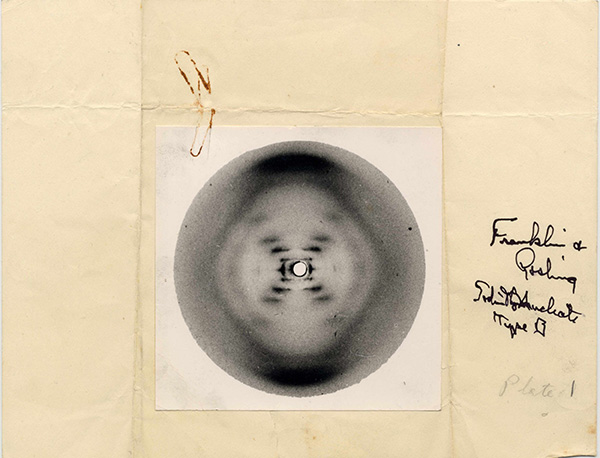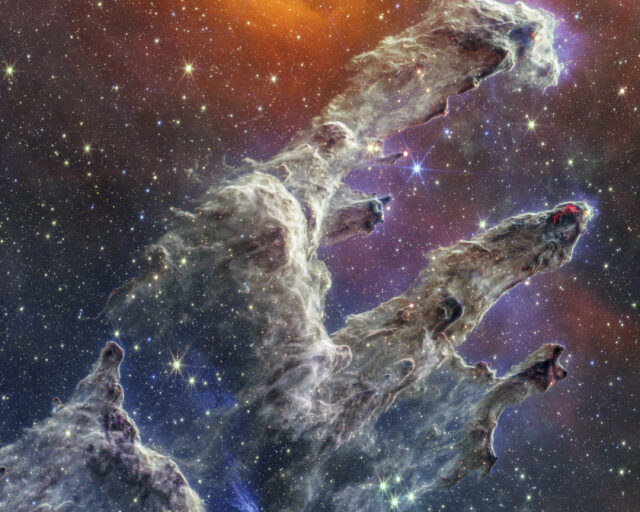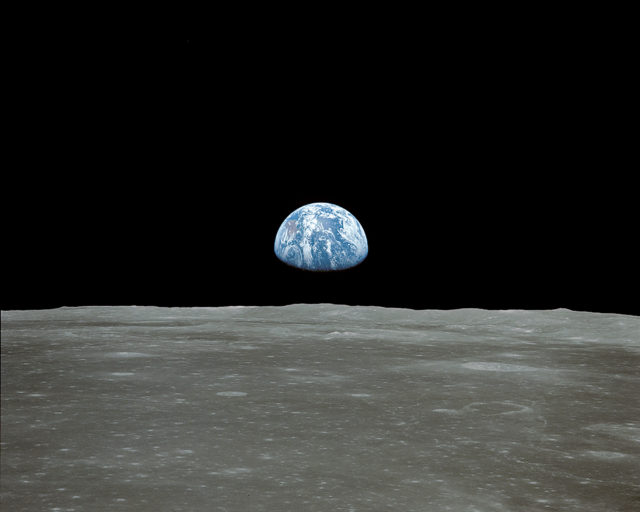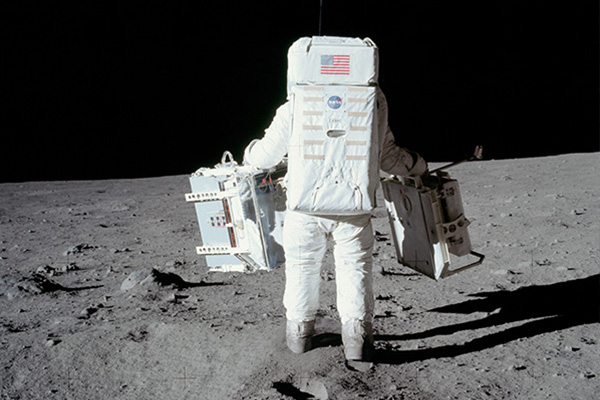Photographer unknown, Rosalind E. Franklin, ca. 1956
After weeks of a well-orchestrated media build-up, the recent release of the first image of a black hole proved to be as stunning as promised. The minimalist image—depicting the gassy orange fumes of a Dunkin’ Donut–shaped celestial event, wrapped around a bottomless void of deep space—is spectacular and resonant with meaning. The emptiness at its center presents a powerful symbol of the malleability of time and space and the startlingly fragile nature of the present.

© Event Horizon Telescope collaboration et al.
Among the fascinating aspects of the image is that much of the work in developing the algorithm that made its capture possible is credited to Dr. Katie Bouman, a twenty-nine-year-old scientist. Historically, women’s visibility and the proper crediting of their work has been a controversial issue in the sciences, but Bouman became Internet-famous as soon as the black hole image was released. Just as quickly, she became a victim of online trolling, as naysayers set out to undermine her contribution to the making of what is certain to be one of the twenty-first century’s most consequential images. This recalls another ground-breaking picture and woman, physical chemist Rosalind E. Franklin, who for most of the twentieth century was under-appreciated for her pioneering work in producing the X-ray diffraction “double helix” image of cell DNA, aka Photo 51, which helped transform the science of genetics.
In the following short essay, “The Story of Photo 51,” historian Marcel Chotkowski LaFollette, writes of Franklin’s 1952 accomplishment and her iconic image’s genesis and import. This essay appears in the forthcoming book, Seeing Science: How Photography Reveals the Universe by Marvin Heiferman (Aperture, Spring 2019).

© 2015, Linus Pauling and the Race for DNA, Special Collections & Archives Research Center, Oregon State University Libraries
Peer deep into this photograph’s heart, eye, vanishing point. Despite the beauty, no hammered stare, of any length, unlocks meaning or maker. The image (inviolate) defies casual analysis. Perhaps, you wonder, identification of topic or photographer is irrelevant. No clues visible (except perhaps to a biologist). Ah, now you read the label. The shoulders sigh (aesthetic surmises fade), the eye winks (no joke), and a scientist strides onto the stage and grips the podium (serious stuff).
This is the iconic X-ray diffraction photograph of DNA taken by physical chemist Rosalind Elsie Franklin and PhD student Raymond G. Gosling. The genetic material glimpsed in Photo 51 connects all living things and the image thus metaphorically captures human past, present, and future. It also marks an important milestone in science. In the last half-century, research that drew from Franklin’s photograph has brought advances in biology, medicine, paleontology, and many other parts of life.
Under a microscope, cells reveal their own truths, possessing the potential to separate conception from context. By convention, science (which makes the invisible visible) renders the visualizer invisible. Discoveries are disassociated (divorced) from he (or she) who stained the cell, mixed the reagents, pushed the buttons, coded the data. In an era when cameras record every baby step and every entertainer’s misstep, it may be difficult (if you are outside that world) to comprehend a culture in which (in theory) the photographer does not attach to the image. Analysis matters. Publication matters. Claiming credit first matters. The photographs themselves are allegedly, well, just part of the work.
This particular image had led Franklin to conclude in 1952 that the strands of DNA might form a helical structure but she was cautious and wanted more data. And therein lies the back story: Franklin’s own vanishing point.
Novelist Josephine Tey once accused historians of flattening the past into a “peepshow,” drawing historical actors as “two-dimensional figures against a distant background.” Let us pull Franklin into the foreground, replace the center of the image with her face (three-dimensional), and consider whether knowing about the photographer matters.

© World History Archive/Ann Ronan Picture Library
In January 1953, Maurice Wilkins, one of Franklin’s colleagues in the laboratory at King’s College, London, shared her photograph (without her knowledge) with two other scientists also in the DNA hunt. James Watson and Francis Crick (the men who, in another famous picture, seem to be ogling a curvy “double helix” model as if it were a naked Venus) interpreted the image (and other material attributed to Franklin). Watson, Crick, and Wilkins raced into print, pushed Franklin aside, and achieved fame and fortune. Franklin was allowed to stand at the back of the stage: her article was the third in the journal issue. Watson’s arrogant dismissal of Franklin’s work continued for decades after her death. Credit should go to the flyboys, the creative geniuses, not the others. “Technical stuff” was “woman’s work.”
Franklin had grasped the image’s essential truth, before others saw it, but the Nobel Prize is not awarded posthumously. Die too soon and you never get to wear a fancy dress. Watson, Crick, and Wilkes made the list four years after Franklin’s death. It is left to history to reconsider (some would say “redress”) such matters. Scientific encyclopedias up through the 1990s included “Franklin, Benjamin” but not “Franklin, Rosalind.” Newer works now recognize Rosalind’s contributions and dissect the social and cultural attitudes that reinforced and stood silent at her marginalization.
The notion that a photographer’s identity might, as a matter of cultural practice, be detached from her photograph may seem an anathema within the world of art, where exhibitions celebrate the vision of those who hold the cameras, even if their names are unknown. Credit is a cultural practice: a matter of grace and humility when shared, a matter of despicable boorishness when unfairly stolen. Fortunately, there is a form of historical geometry: a line (reinforced) attaching Franklin to this photograph and its meaning in time.
At first glance, such context remains obscured from the viewer. The photograph’s mysterious, cloudy strands loop themselves around our eyes and engender thoughts of beauty. But for those who value integrity, well, pull on that line and reach for Rosalind E. Franklin. No vanishing point to memory or to our common humanity. Credit due.


























